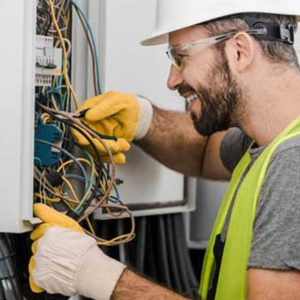Riding a motorcycle is one of the most enjoyable ways to take on the open road. However, the learning curve can be challenging and you need to get a motorcycle license.
We compiled the top 10 tips to make sure that you can get your license fast. From expert tips to safety reminders, we’ve got you covered.
Choose a smaller vehicle for the test.
It may be tempting to try your skills on a bigger motorcycle, but a smaller one might yield the best results.
You won’t have to worry about getting the hang of complex features. Leave the big bikes to the experts, or wait until you have more experience.
Remember: you don’t need to impress the examiners with flashy skills or top-of-the-line gear. All that you need to do is to pass and get your license.
Inspect the condition of your motorcycle.
Expect that you will be asked to perform certain maneuvers such as braking, using the headlights, signaling, among many others. Thus, your motorcycle must be in its best shape.
You wouldn’t want to fail your test simply because you forgot to run a general inspection. You can do this right at home or go the extra mile by consulting with your local mechanic.
Practice, practice, practice.
Practice will be your key to success. You can read as many tips as you want, but nothing beats experience. Theoretical knowledge can only do so much; You will need complete confidence in your skills to pass.
Read the guidelines or the handbook.
Make an effort to learn about the rules and other safety protocols necessary. The handbook will be your best friend, as this will contain virtually everything that you will need to know.
Take it a step further and do more research. You can watch videos online or read more material regarding the exam process.
Be mindful of road signs.
Always pay attention to road signs. Make this a habit even when you’re only just practicing. Once you take on the test in real life, you will face multiple signs intended to guide you.
This may throw you off or make you lose your focus if you are unprepared. Reading signs and following them are the basics of the test.
Signs are intended to keep you safe on the road. Please don’t ignore them, and practice reading multiple ones at a time.
Punctuality is appreciated.
Avoid being late, as this may give a bad impression and, in the worst case, push your examiner to cancel the test.
Punctuality and being prepared in general will get you started on the right foot. Plan accordingly, and aim to arrive at least 15 to 20 minutes earlier than your scheduled time.
Don’t forget to bring all the requirements. Make sure that you’ve prepared everything you need the day before to avoid last-minute hassles.
Look straight ahead.
We know it’s easier said than done, but: don’t be distracted. Remember to look straight ahead and to keep your eyes on the road.
Pay attention to any hazards ahead of you. It’s also essential to anticipate others’ maneuvers and make the right decisions on the road. Multi-tasking is crucial, as there are many factors to consider.
Most importantly, listen to and follow the instructions from the examiner.
Don’t let your nerves get the best of you.
Riding and driving a motorcycle requires confidence. Even though you may be a beginner, it’s vital that you feel confident in your skills.
The best way you can do this is by preparing well. Since you are reading this, you’re already doing well!
We even recommend asking people who have taken the test as well. Ask for their insights or any other tips to make the exam process easier for you.
Stay calm.
Panicking and worrying will do you more harm than good. You won’t be getting extra points, nor will it improve your riding. It may even negatively impact your focus.
Remain calm while you’re on the road. Doing this will prevent mistakes thus, leading to better performance. We even recommend doing a few breathing exercises before starting with your exam.
If you prepared well for it, you would feel calmer. Try planning a study schedule to make sure you covered all topics.
The motorcycle driving test will require you to be confident and ready. With the rise of motorcycle hazards and accidents, you must know the vehicle’s ins and outs.
Failing to prepare is preparing to fail. As long as you’ve practiced enough and read up on all that you need to know, you should be fine.
Be safe, and don’t forget to have fun. Follow our tips above to make the exam smoother and more manageable! In just a few days, you’ll be able to pass the exam and hit the road on your motorcycle.
Any other tips? Let us know in the comments!









Be First to Comment